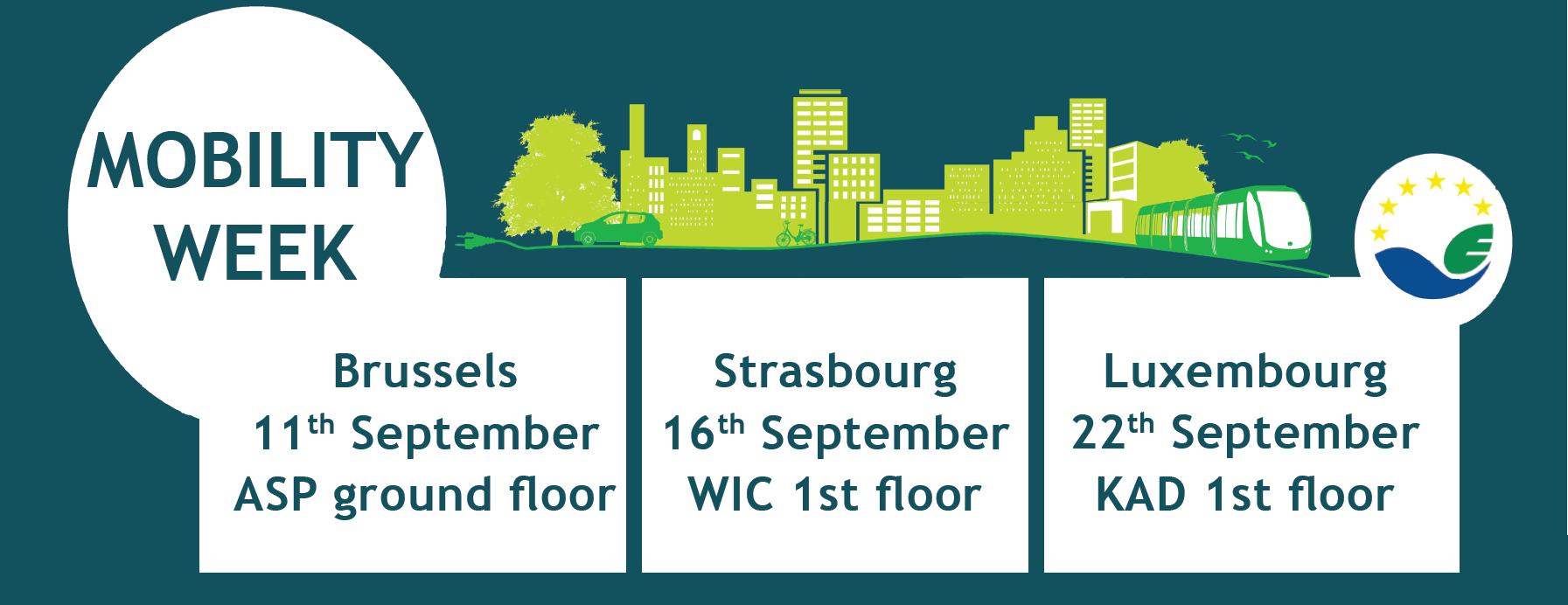
The global population is forecast to increase to 9.1 billion by 2050. Urban population will grow from 50% to 70% of that total. Global CO2 emissions from inland passenger and freight transport is also predicted to grow around 100% by 2050 – by 500% in China and India. Unsurprisingly, such population expansion will put pressure on protecting public space, and public transport will have to be adapted – get an idea of the stakes at Transport for a Changing World. The study from EP’s Directorate-general for Internal Policies on Integrated Urban Transport Plans and Cohesion Policy analyses the link between integrated urban transport planning and funding for transport policies by cohesion policy through eight case studies.
How will Europe and the European Union authorities face the forthcoming challenges?
The EU Mobility Week campaign has been designed to encourage citizens to reflect on their choices, and raise awareness that transport choices do have an impact. You will find information on the European Mobility week at http://www.mobilityweek.eu/join-us/. Since its launch in 2002, European Mobility Week has focused on many aspects of mobility, such as transport innovation, quality of urban life or accessibility. This year European Mobility Week concentrates on the place of the individual in the city. The slogan “Our streets, our choice” places the individual at the centre of reflections on urban mobility issues, the background for which you will find in our Keysource on “Future challenges for transport policy”.
[wpvideo 2AxmvLaZ]Most of us commute to work, university, and school. Shaping smart cities “Mapping Smart cities in the EU“, using big data to increase fluidity, building smart vehicles, getting advance information on weather conditions and data in real time; all these technologies, known as Intelligent Transport Systems in urban areas, help to increase mobility, reduce congestion and cut greenhouse gas emissions.
Forget the idea that protecting the environment and our quality of life is uneconomic. This study on the Economic aspects of sustainable mobility provides a quantitative overview of the economic effects of a series of eco-innovations relevant to sustainable mobility.
Local, regional and national authorities face infrastructural and logistical issues in urban areas; the preservation of public spaces and improvement of quality of life are key issues for public authorities. Promotion of sustainable mobility is at the core of EU transport policy for Urban mobility. To learn more about EU policies, governance and funding, read our in-depth analysis on Urban mobility: Shifting towards sustainable transport systems.
In mobility matters, Europe is a good student. Following The Future of Urban Mobility 2.0 : Imperatives to shape extended mobility ecosystems of tomorrow, Europe achieved the highest average score of six world regions surveyed on mobility maturity and performance out of some 84 cities worldwide, with an average of 49.8 points. The best performances were scored by Stockholm (57.4) Amsterdam (57.2) and Copenhagen (56.4 points).
The European Parliament has examined the opportunities for eco-efficient transport with a lower environmental impact, alongside potential new energy solutions that could decrease Europe’s dependence on oil and tackle climate change. Feel free to read more in the studies by our Scientific Foresight unit, such as Urban transport technology options in urban transport : changing paradigms and promising innovation pathways : final report or a video on Eco-efficient transport and modern energy solutions, that will give you the whole picture.
Finally, the EP has also evaluated the challenges and opportunities of developing a cycle tourism network across Europe: The European Cycle Route Network – EuroVelo. This study reviews the market for cycle tourism and evaluates the recent developments on the Iron Curtain Trail.
70 000 km cycling all over Europe! Now that could be a real personal challenge.









If we want a better and greener future we have to invest in sustainable mobility, and for instance, in EVs.